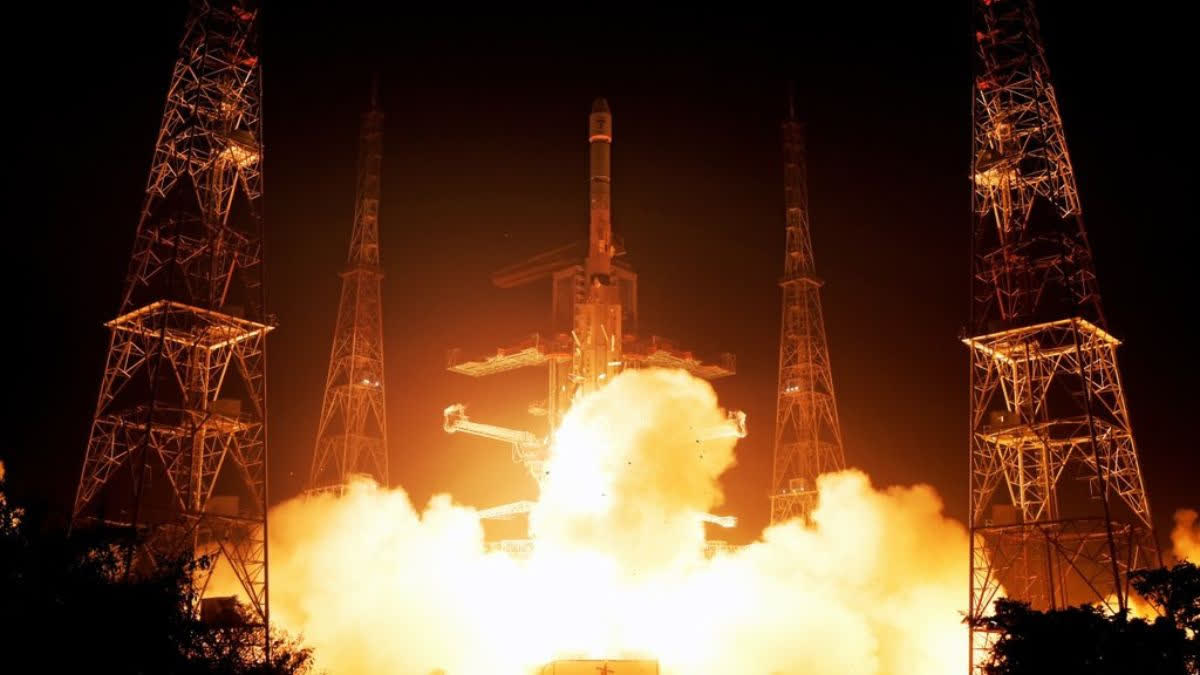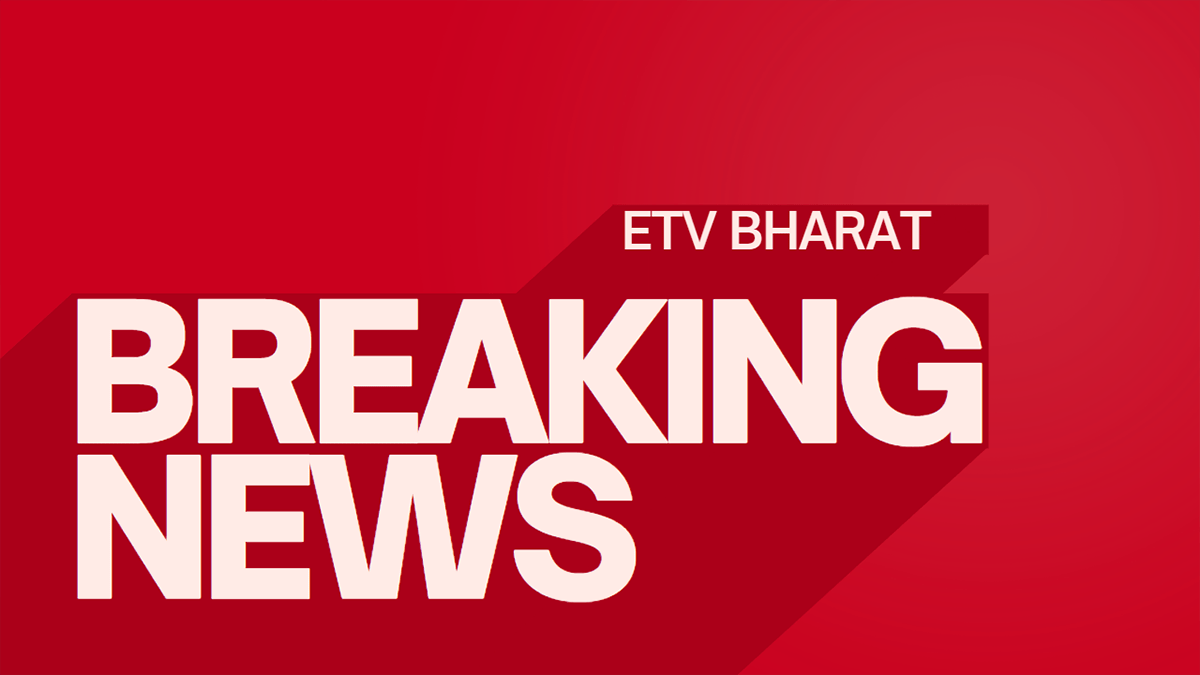ISRO Successfully Launches GSLV-F15 NVS-02 mission, 100th Launch From Sriharikota
ISRO has successfully launched the GSLV-F15 NVS-02 mission from the Satish Dhawan Space Centre in Sriharikota, marking the 100th launch from the spaceport.


Published : Jan 29, 2025, 6:44 AM IST
Hyderabad: The Indian Space Research Organisation (ISRO) successfully launched the GSLV-F15 NVS-02 mission at 6:23 AM IST from the Satish Dhawan Space Centre in Sriharikota, Andhra Pradesh. This marks the 100th rocket launch from this spaceport. India's 17th Geosynchronous Satellite Launch Vehicle (GSLV), GSLV-F15 has been launched from the second launch pad of the Satish Dhawan Space Centre.
The payload of the rocket carries a 2,250-kilogram NVS-02 satellite which is a part of the NavIC (Navigation with Indian Constellation) system and caters to the country's navigational demands. The GSLV-F15 has placed the NVS-02 satellite in a 322.93 km Geosynchronous Transfer Orbit.
NVS-02: What's New?
NVS-02, the second of the five navigation satellites, carries the Rubidium Atomic Frequency Standard (RAFS). The RAFS is an atomic clock that is a stable frequency reference for the navigation payload. Moreover, the NVS-02 uses a combination of indigenous and procured atomic clocks for accurate time estimation and will replace the IRNSS-1E.
NavIC (Navigation with Indian Constellation), is designed to offer accurate position, velocity, and timing (PVT) services to users in India as well as in regions that extend around 1,500 km beyond the Indian land mass as well. NavIC offers two types of services-- the first is the Standard Positioning Service (SPS) and the second is the Restricted Service (RS).
The SPS from NavIC offers a position accuracy of 20 metres along with a time accuracy of 40 nanoseconds over its service area.
Additionally, the five second-generation NavIC satellites-- NVS-01/02/03/04/05, have been planned to be placed in the Geosynchronous Transfer Orbit which will enhance the PVT services.
📸 Relive the moment! Here are stunning visuals from the GSLV-F15/NVS-02 launch.
— ISRO (@isro) January 29, 2025
A proud milestone for India’s space journey! 🌌 #GSLV #NAVIC #ISRO pic.twitter.com/RK4hXuBZNN
NavIC will be useful in fields that include transportation (terrestrial, aerial, and marine), location-based services (an alternative to GPS), personal mobility, resource monitoring, surveying and geodesy, scientific research, time dissemination and synchronisation, and safety-of-life alert dissemination.
ISRO Chairman V Narayanan congratulates mission team
After the successful launch of the GSLV-NVS02, ISRO Chairman V Narayanan addressed the gathering. "I am extremely happy to announce from the spaceport of ISRO that the first launch of this year 2025 has been successfully accomplished, with GSLV- F15 launch vehicle precisely injecting the navigation satellite NVS-02 in the intended required (GTO) orbit," he said, highlighting that the mission marks the 100th launch from the Sriharikota.
ISRO has developed six generations of launch vehicles. The first one, SLV-3 E1/Rohini was developed under the guidance of Professor Satish Dhawan and former President APJ Abdul Kalam as the project director in 1979. "From that, till today...we have accomplished 100 launches from these launchpads. We have lifted 548 satellites to orbits...we have lifted a total of 120 tonnes of payload including 23 tonnes of 433 foreign satellites," he added.
The launch site here has witnessed several significant milestones of the Indian space programme, including three Chandrayaan missions, the Aditya L1 mission, a single rocket placing 104 satellites in orbit and a host of communication, earth observation and navigation satellites, he further said. "On behalf of the present generation of ISRO leaders, I salute all the previous generation of leaders, the past and present employees and our family members, industrial and academia partners for their sincere efforts, hard work and dedication that enabled us to accomplish this mission."
Narayanan mentioned that the NavIC system is constantly evolving and serves as the backbone of the indigenous satellite navigation ecosystem of the Indian region. "The NVS-02 satellite incorporates the second indigenous Atomic clock, which is a shining example of Make in India in the critical technology development. Today, many applications based on NavIC, spanning from strategic uses, tracking of shipping vessels, time synchronisation, train tracking, and safety of life alert dissemination are accomplished."
He thanked the political leadership for the encouragement and support provided to the country's space program and concluded his speech by congratulating all teams associated with the mission. He mentioned that they would be tracking the orbit of the NVS-02 satellite and deploying it to the assigned orbit.
Also Read:





